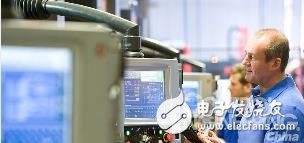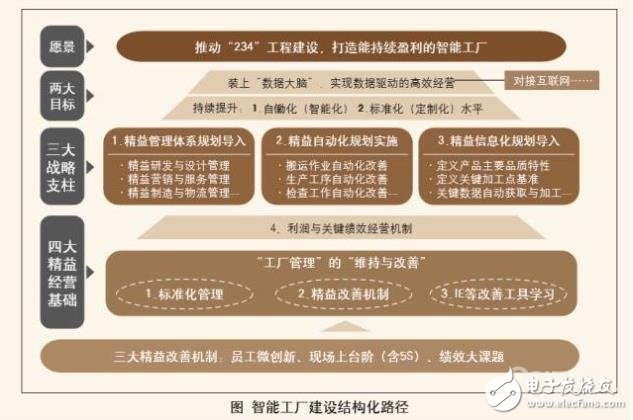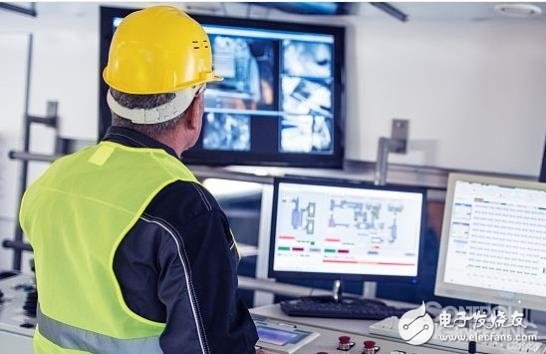In order to cope with the rising labor costs, enterprises expect to achieve machine-to-manual replacement as soon as possible, especially when it comes to seeing a piece of assembler, this idea is even more urgent. In the face of market demand, some automation companies began to boldly take orders and promised everything. As a result, after signing the contract and paying the first payment, the automation company began to try it out (continuous trial and error). In many cases, it was impossible to deliver reliable automation equipment or production lines, and the two parties were dissatisfied and even troubled by the dispute. On the other hand, due to the pressure of the trend, the construction of enterprise information is still in the ascendant, but the low efficiency of construction is even more shocking . Many companies have invested heavily in the introduction of ERP systems, and ultimately they can't make production plans. Without a production plan, it is naturally impossible to generate a procurement plan; without a production plan, there is no material outbound or distribution plan; without a production plan, production scheduling management cannot be performed; without a production plan, material or order cannot be delivered. Waiting for an alarm or control... So, an ERP that cannot achieve a production planning function is not an ERP at all. In the end, what kind of automation and informatization is needed In order to correctly understand or orderly promote the construction of smart factories, the author has created a smart factory structured path as shown in the long-term consulting experience, which shows the business operation and automation, lean The relationship between informationization and intelligence has important guiding significance for the construction of smart factories. Through this structured path, we can understand the vision, goals, strategy and architectural foundation advocated by smart factories from the top down. The digital signage Advertising Player is a new generation of intelligent equipment that uses standard LCD displays and LCD TVs to realize information display and video advertisement playback through networking and multimedia system control. Outdoor LCD digital signage advertising machine replaces traditional light boxes, posters, and frames. An LCD advertising player can play multiple pictures and videos at the same time, making full and effective use of geographic technology locations. Save costs and better publicize and display products. digital signage,digital signage outdoor,digital signage advertising,wall mounted digital signage,interactive kiosk,stretched lcd displays Shenzhen Hengstar Technology Co., Ltd. , https://www.angeltondal.com
A small household electrical appliance company found a service provider to carry out automation transformation of the assembly line. The contract was completed in 5 months, and it was not possible to deliver it after more than a year. According to our understanding, the automated production line can not be delivered, mainly due to the company's product technology, parts and components are not accurate enough. Of course, the automation company's prior research or lack of experience, rushing to take such orders, there are unshirkable responsibilities. If this assembly line is to be successfully retrofitted, it is necessary to re-optimize the product and process design, and to improve the machining accuracy of the parts, that is, to carry out comprehensive lean improvement. Even so, not all operations need or can be automated, but specific issues are analyzed. 
In addition to ERP, companies also purchase or internally develop systems such as financial management, human resources management, customer relationship management, mold management, equipment management, order management, and OA. At best, these systems are only used as props for recording, querying, and communicating. They have rarely seen the effects of statistics, analysis, reporting, alarming, error correction, visual monitoring, and functional coordination to improve the level of management intelligence.
In addition, in automation, informatization, there are many phenomena such as keeping up with the wind, causing great waste of resources. Therefore, how to automate and informatize is the subject that enterprise managers need to study seriously. 
The first is to build a vision that is to equip a data brain that can help us achieve efficient operations. This data brain is the nerve center responsible for thinking, judging, and issuing instructions in business operations. It obtains valuable information from various fields of business management, and through classification, processing and processing, draws various effective conclusions or instructions to effectively control the operation of the enterprise. It is conceivable that in a “central management roomâ€, we can immediately see various business charts and data, see key KPIs and work hard for them, and see the progress of key strategies or issues, etc. There are counts in the brain. 
Followed by two construction goals (or principles): one is automation or intelligent, and the other is on time or customized. These two goals were originally two of the Lean principles of Toyota's production methods. They were proposed by Toyota Motor long ago and still have important practical significance. In other words, the construction of a smart factory must conform to the principle of “self-defeatingâ€, let the owner of the production or management system have the wisdom, and have the ability to judge, alarm, prevent and correct errors, automatically stop, etc. (not the automation of general sense). In today's words, it is called intelligence. The aim is to pursue zero defects and save people. The construction of intelligent factories must conform to the principle of “just-in-timeâ€, so that the production or management system has sufficient flexibility to respond quickly to market demands without increasing costs or reducing costs, to meet the individual needs of customers, and ultimately to achieve The goal of "customized" production.
The third is the three strategic pillars, namely lean, automation and information technology. Leanization refers to the main value (research, production, sales, etc.) processes and systems closely related to the provision of products or services. The system must comply with the lean principle and be lean optimized to ensure that processes and systems can provide products efficiently, quickly and stably. and service. Automation is to let the machine work on behalf of others, the purpose is nothing more than improving efficiency (higher than manual efficiency), guaranteeing quality (stable and reliable than manual), avoiding safety risks (not afraid of accidents) and reducing labor intensity (not afraid of fatigue) . Informatization is the replacement of tasks such as recording, statistics, analysis, reporting, early warning, judgment, instruction and coordination through IT and Internet technologies.
It can be seen that self-defeating (intelligent) and punctualization (customization) are two goals, and the improvement of lean, automation and informationization is the means to achieve two goals. The relationship between goals and means should be clear. It is impossible to confuse intelligence, punctuality and other three.
The fourth is the four lean operating foundations, namely, standardized management, lean improvement mechanisms, learning tools and learning methods, and profit management mechanisms.
The first foundation is standardization management. In fact, it is to do two things. One is to define standard operations, that is, to standardize the steps and action requirements of all operations, so as to ensure efficient processes and repeatable results. The second is to develop operating standards, that is, to develop a standard of operation that is clear at a glance and meets the requirements of standard operations, so as to train, train, and compare operators.
The second foundation is to introduce a lean improvement mechanism to facilitate the company's full participation in lean improvement and to continuously improve the performance of business management. The consultant company where the author is located actively promotes the three lean improvement mechanisms of micro-innovation (employee proposal), on-site steps (self-management) and performance majors of the company's operation staff, and promotes the extensive participation of employees.
The third basis is to improve the learning and application of tool methods, including IE, new and old QC tools, VSM, 6Sigma and other methods to find problems, analyze problems and solve problems.
The fourth foundation is the profit management mechanism. This is the ultimate business tool that must be mastered by the top management. It begins with defining the business philosophy and business strategy, and achieves corporate improvement by formulating and implementing a series of specific business operations such as the annual business plan. Business objectives such as profit.
These four foundations are not a dispensable job for smart factory construction, but a very important component.
In the past 30 years, domestic manufacturing enterprises have achieved rapid development in scale. However, the weak management and management foundation has always been a big problem. In recent years, the introduction of information and automation in the enterprise has been extremely low, and the investment efficiency is extremely low. Enterprises can refer to the illustrated smart factory construction structure path, based on long-term, scientific planning, step-by-step implementation of lean, automation and information, gradually improve the level of intelligence of the factory, and finally build an efficient smart factory.
How to maximize efficiency in smart factory construction?
1 Without lean automation and information, it will cause great waste